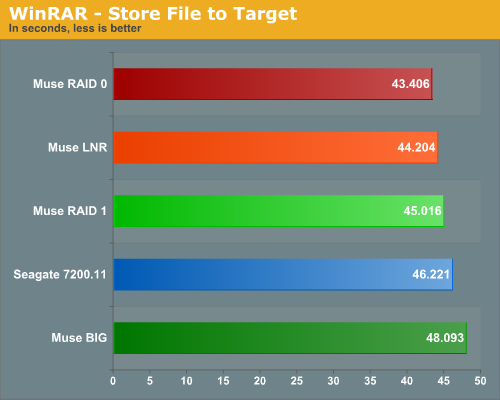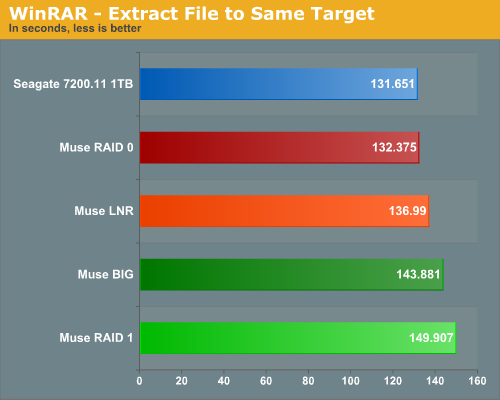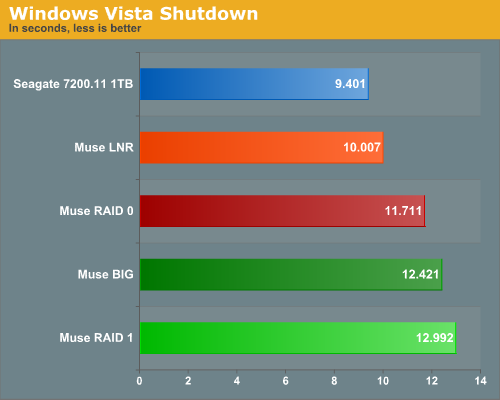Thermaltake Muse R-Duo: External RAID
by Dave Robinet on December 14, 2007 2:00 AM EST- Posted in
- Storage
WinRAR
We have updated our WinRAR test methodology. We are now using a larger and more comprehensive directory structure (2.9 gigabytes, 154 files and 8 folders), and are using the "store" mode to eliminate the CPU as being a bottleneck in our testing. We run all tests three times to ensure consistency.
Our first WinRAR test takes our sample directory from the source WD Raptor drive and puts it in an archive on the test device. This is a good representation of a practical "write" test of the test device. We then take the newly created archive and uncompress it on the same drive. The second test therefore becomes a combination of read, write, and seek performance.


The Muse performs somewhat better in these benchmarks, though the overall transfer rate performance of the controller continues to be unimpressive. This is particularly obvious in WinRAR Test 1, where the RAID 0 configuration only slightly edges out the Linear (1 drive) configuration - this, in a benchmark which is basically the ideal showcase for RAID 0's transfer rate improvement. Big mode continues to be the slowpoke of the results in the test.
Windows Vista
Our stopwatch begins when we select Vista from the OS Choices menu at startup. We end when the login screen appears. We re-run the test three times, and take the average result of the three scores.

Vista Shutdown
For our shutdown test, we shut down Vista with no applications running. We run the test three times, and take the average result of the three scores.

Again, performance is lower with the Muse than running a single drive, more noticeably during the shutdown test. RAID 0/1 and Big mode all perform worse than Linear mode.










11 Comments
View All Comments
Magendanz - Friday, December 14, 2007 - link
Actually, I think this should be targeted aggressively at the small business market. There's really no cheaper or easier way to protect your critical business records against a drive failure. Just buy it, insert two SATA drives, set a DIP switch, and attach it to your existing PC. Drive performance is really secondary.